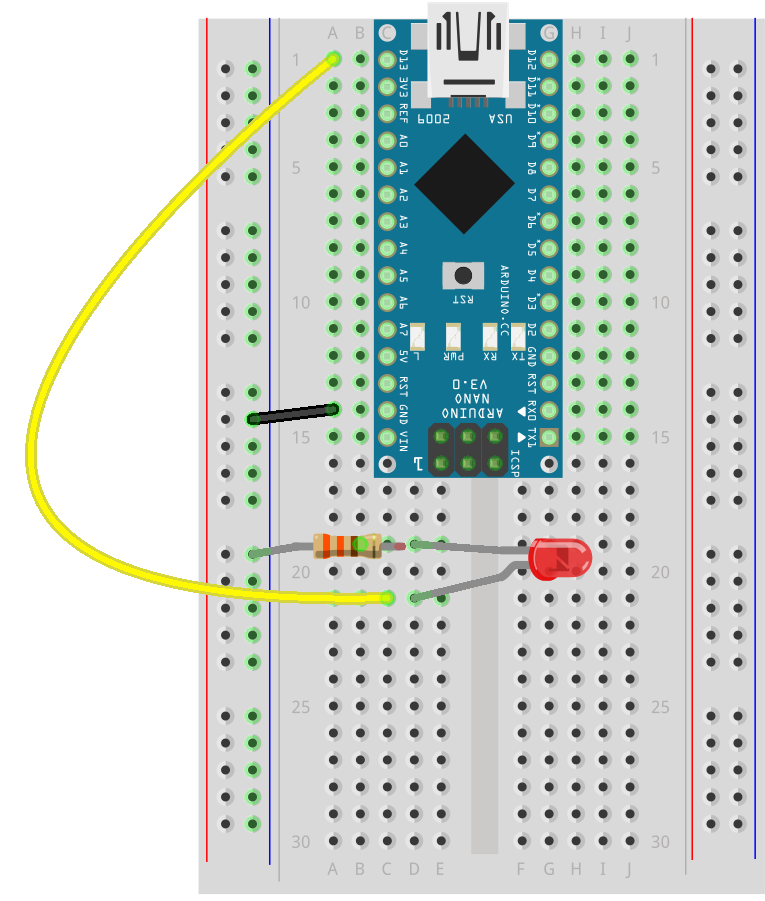
- Arduino nano schematic how to#
- Arduino nano schematic install#
- Arduino nano schematic serial#
- Arduino nano schematic download#
When I get to the P C B design, I will need to remember to spread these back out. Keeping the ICs decoupling capacitors in a group keeps the schematic clean. Usually need one hundred nanofarad to one microfarad, while larger loads like motors, could require hundreds of microfarads. Picking the correct values for decoupling capacitors is a complicated, topic., Smaller loads like a simple IC. The idea of a decoupling capacitor is that you want to DECOUPLE the ICs power pins from the rest of the circuit or supply. Pins will get a one hundred nanofarad capacitor. We need some decoupling capacitors on the IC. These are ultra stable, with voltage, temperature and time., But more on that in a different video. You might notice, I called out C ZERO G ceramic capacitors. I already have twenty two picofarad caps in my kit., So lets add a crystal and load capacitors to my design. Looking there we see recommended values between twelve and twenty two picofarads. So, for now we will use the values in the three twenty eights data sheet. Diving into how this circuit works is cool, but more detailed than I want for this video. They require a couple of load capacitors to form the oscillator circuit. Unless board space is limited or cost is a huge concern, I prefer using a crystal. With that said, genuine Arduino boards tend to use Ceramic resonatorsat least for the three twenty eight. Ceramic resonators are slightly better, but still not the best option.
Arduino nano schematic serial#
If you need U ART or serial communication, this oscillator just will not work. RC oscillators are not very accurate and can change with temperature or voltage. Are three ways to create a clock signal for our Arduino, an RC circuit, a ceramic resonator or a quartz crystal. A waveform going from low to high is like a oscillating signal. Okay, but then what is an Oscillator When something Oscillates it moves back and forth. External clocks can run At almost any speed you want and have much higher accuracy. Processors like the three twenty eight pee do have a built in oscillator., BUT it is slow and not what I would call accurate. Everything that happens inside of a microcontroller is based on a clock signal., Which is generated from an oscillator circuit. Next, we need something to drive the chip, which means we are going to connect a clock. There are a lot of pins and by the time we are done, most of these are going to be connected. First up, we need a heart or well brain., So I am going to grab the ATmega328p. Now that is out of the way lets go design something. That is not the point of THIS video., So, regardless of what CAD tools YOU use, this tutorial is focused on the DESIGN, not the tools.

Look, I could use EAGLE or Altium or Diptrace, or even just a pen and some paper. It did not take long for the comments to explode. Just a quick note: I am going to be using KiCad in this video explosion. Stay tuned and subscribe for those episodes are available. I will design the PCB and then turn on the assembled board. This video is part one of a three part series.
Arduino nano schematic how to#
I will show you how to build a DIY Arduino board, the key things you need and stuff. Here is an example of my RetroPie power controller. You could buy something like this cheap nano form factor. What’s different here from the previous example is that we need to create two pipes or addresses for the bi-directional communication. write(&buttonState, sizeof(buttonState)) Radio.openReadingPipe( 1, addresses) // 00002 Radio.openWritingPipe(addresses) // 00001 */ # include # include # include # include # define button 4 RF24 radio ( 7, 8) // CE, CSN const byte addresses = * Arduino Wireless Communication Tutorial Here are the two codes for the wireless communication and below is the description of them.
Arduino nano schematic install#
Just search for “rf24” and find and install the one by “TMRh20, Avamander”. We can also install this library directly from the Arduino IDE Library Manager.

Arduino nano schematic download#
Once we connect the NRF24L01 modules to the Arduino boards we are ready to make the codes for both the transmitter and the receiver.įirst we need to download and install the RF24 library which makes the programming less difficult. As an Amazon Associate I earn from qualifying purchases. Breadboard and Jump Wires ………… Amazon / Banggood / Aliexpressĭisclosure: These are affiliate links.Arduino Board ……………………………… Amazon / Banggood / Aliexpress.

NRF24L01 Transceiver Module……… Amazon / Banggood / Aliexpress.You can get the components needed for this Arduino tutorial from the links below: As I already mentioned, each Arduino board has different SPI pins, so keep that in mind when connecting the modules to your Arduino board.


 0 kommentar(er)
0 kommentar(er)
